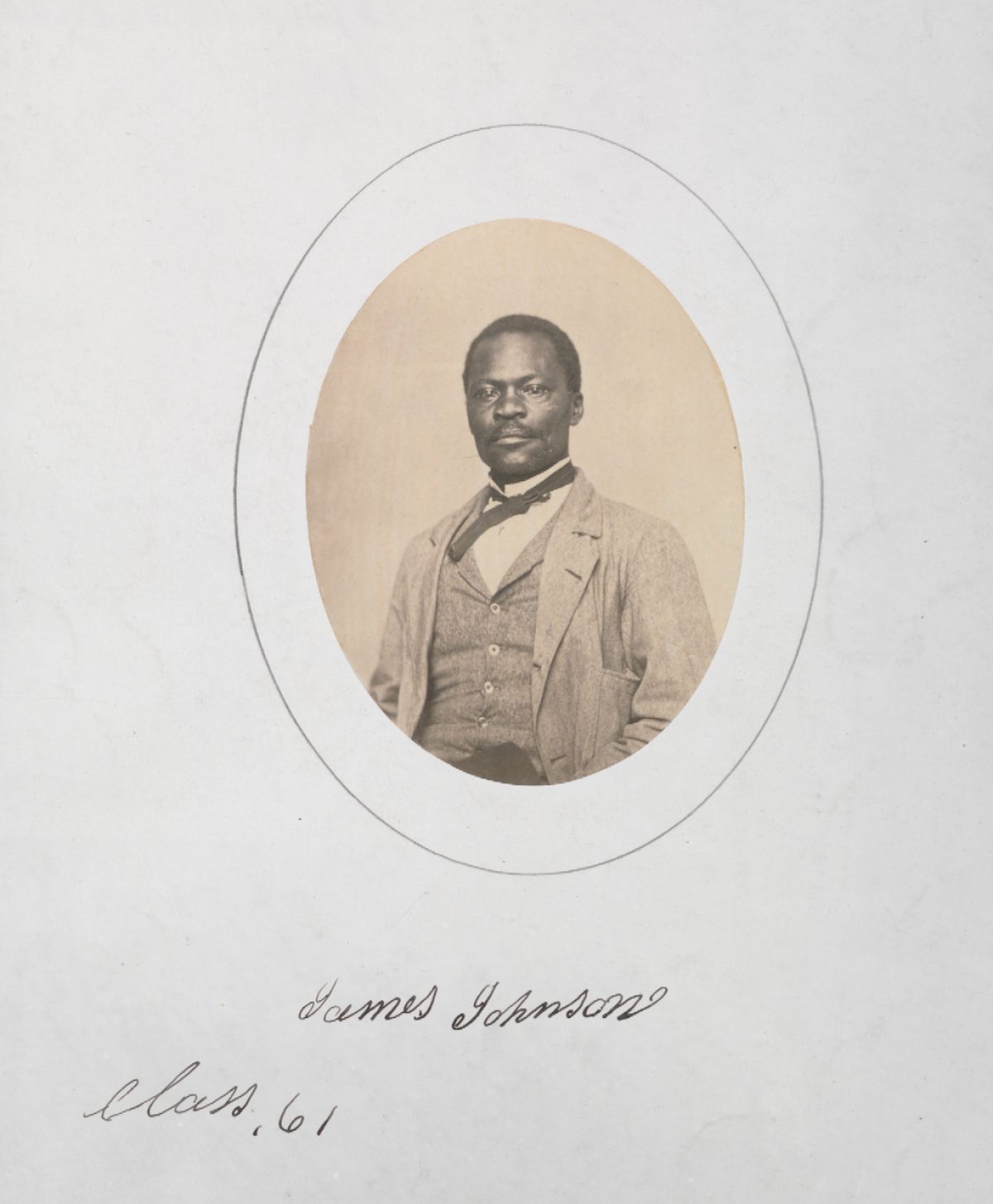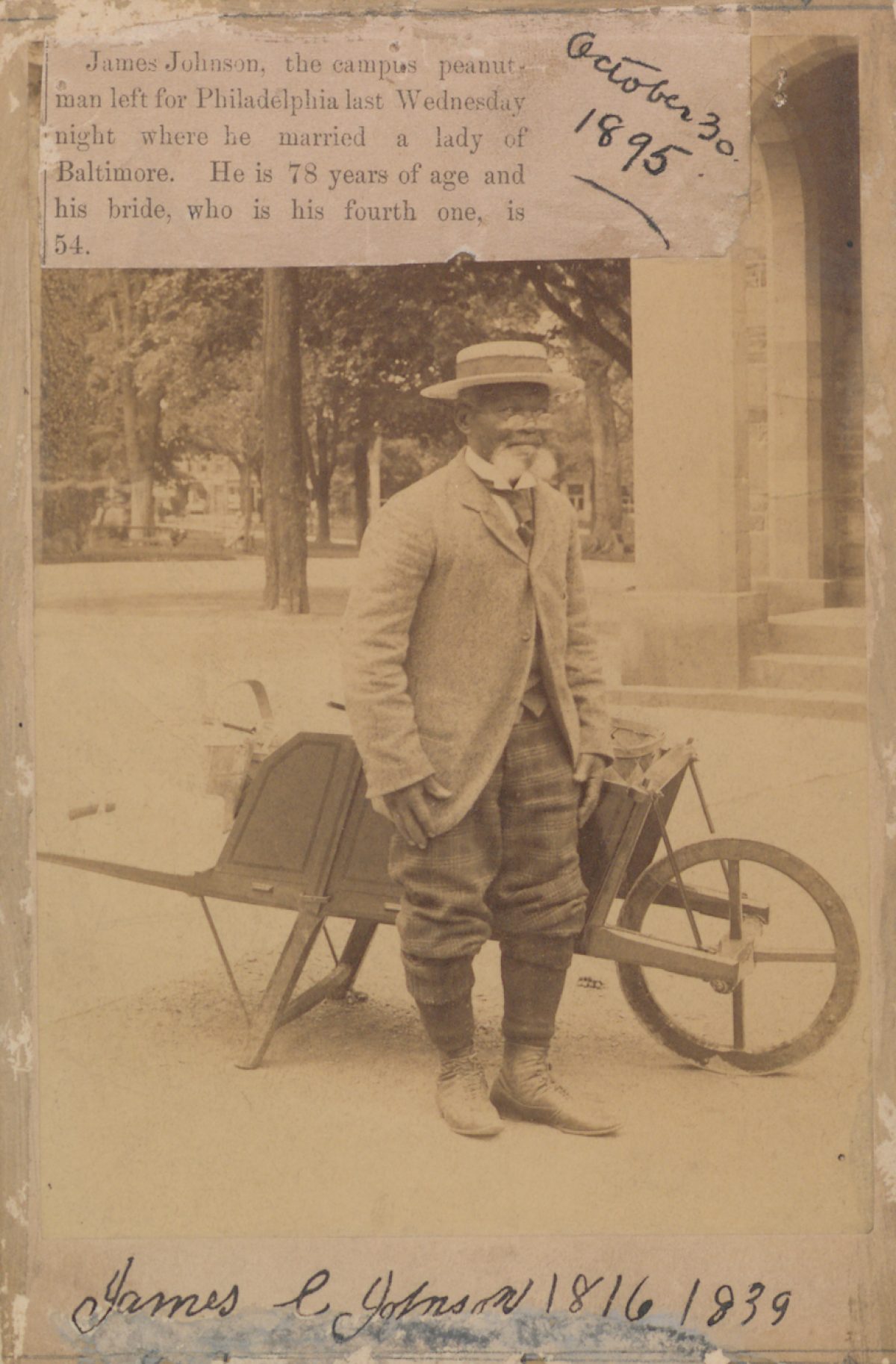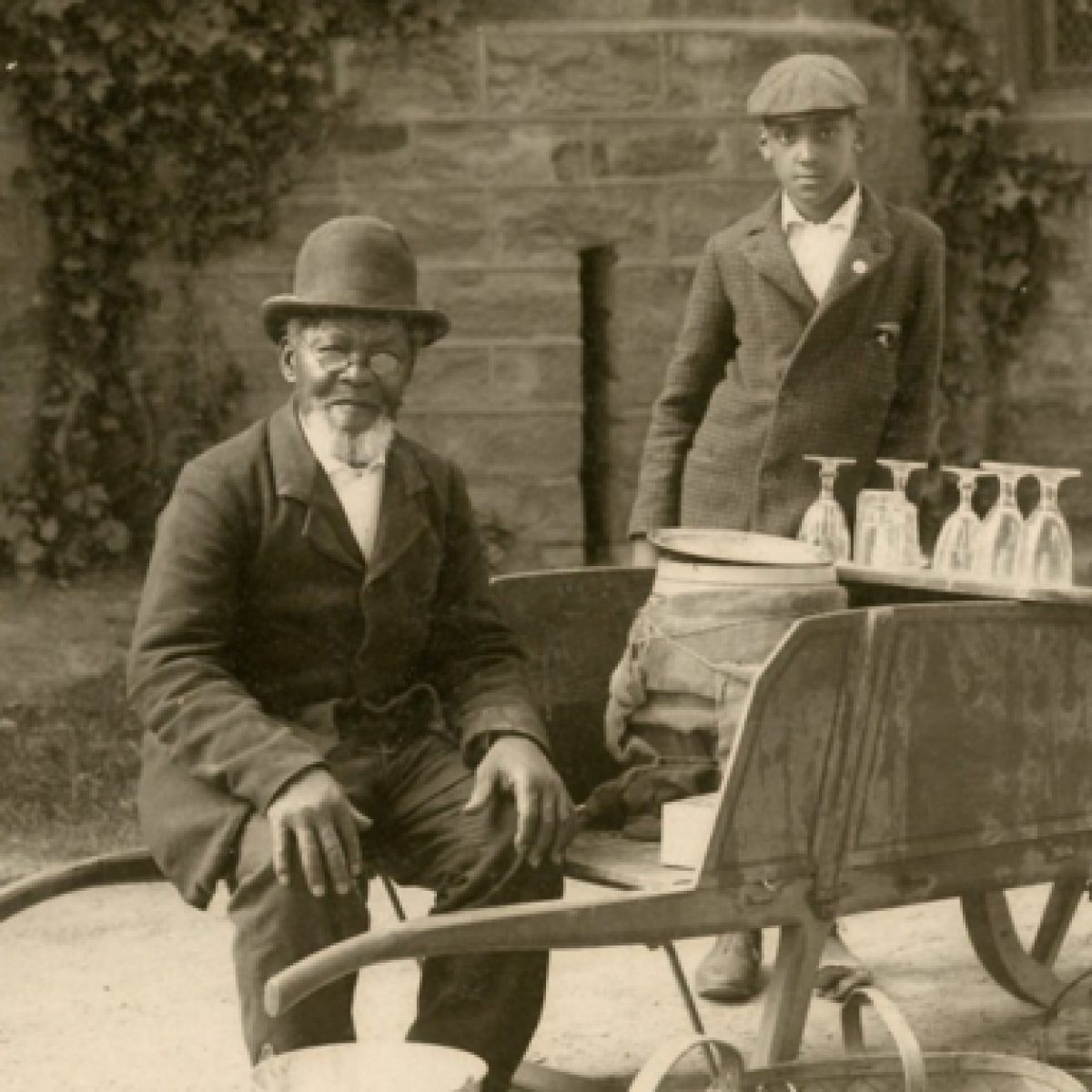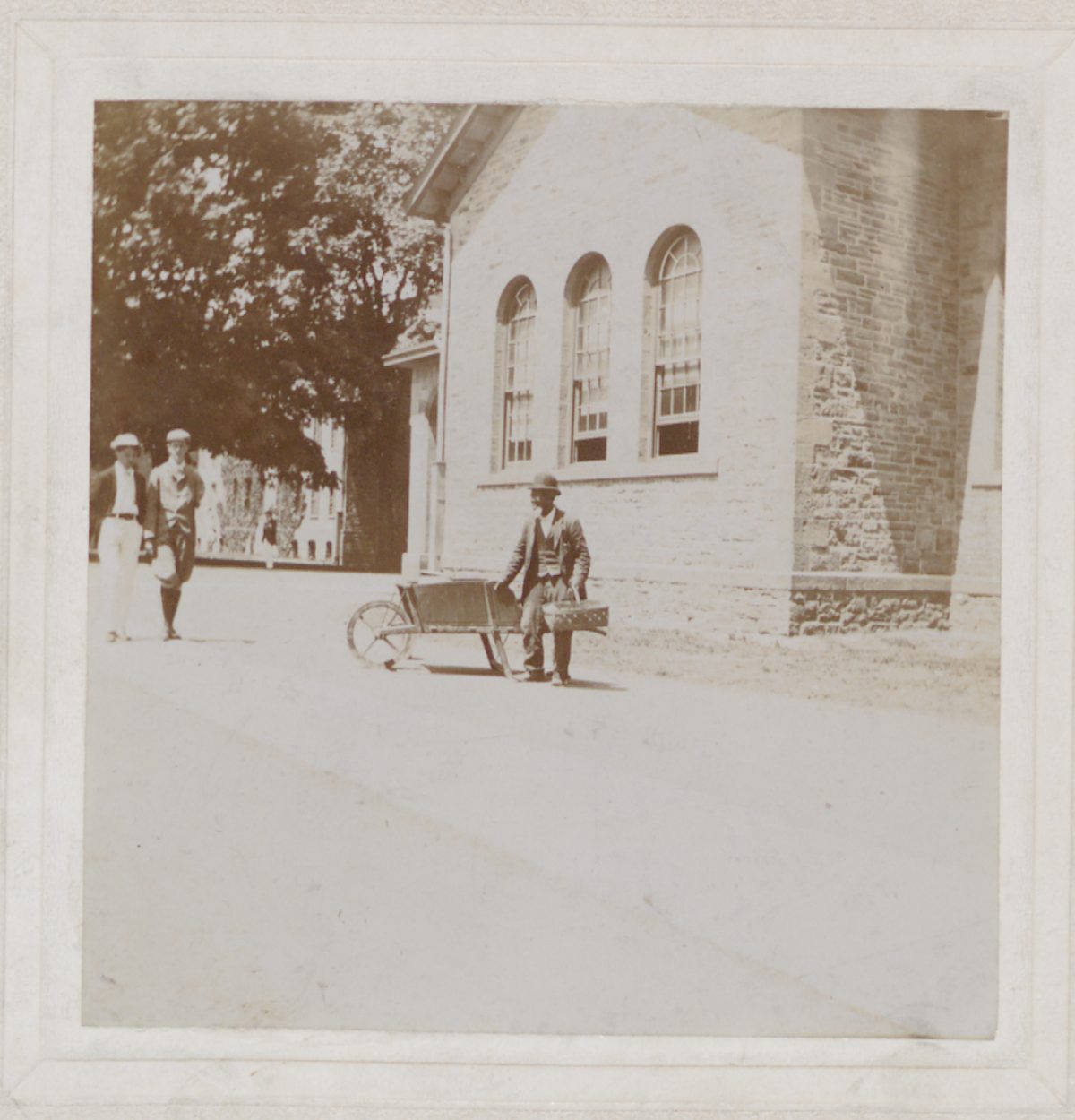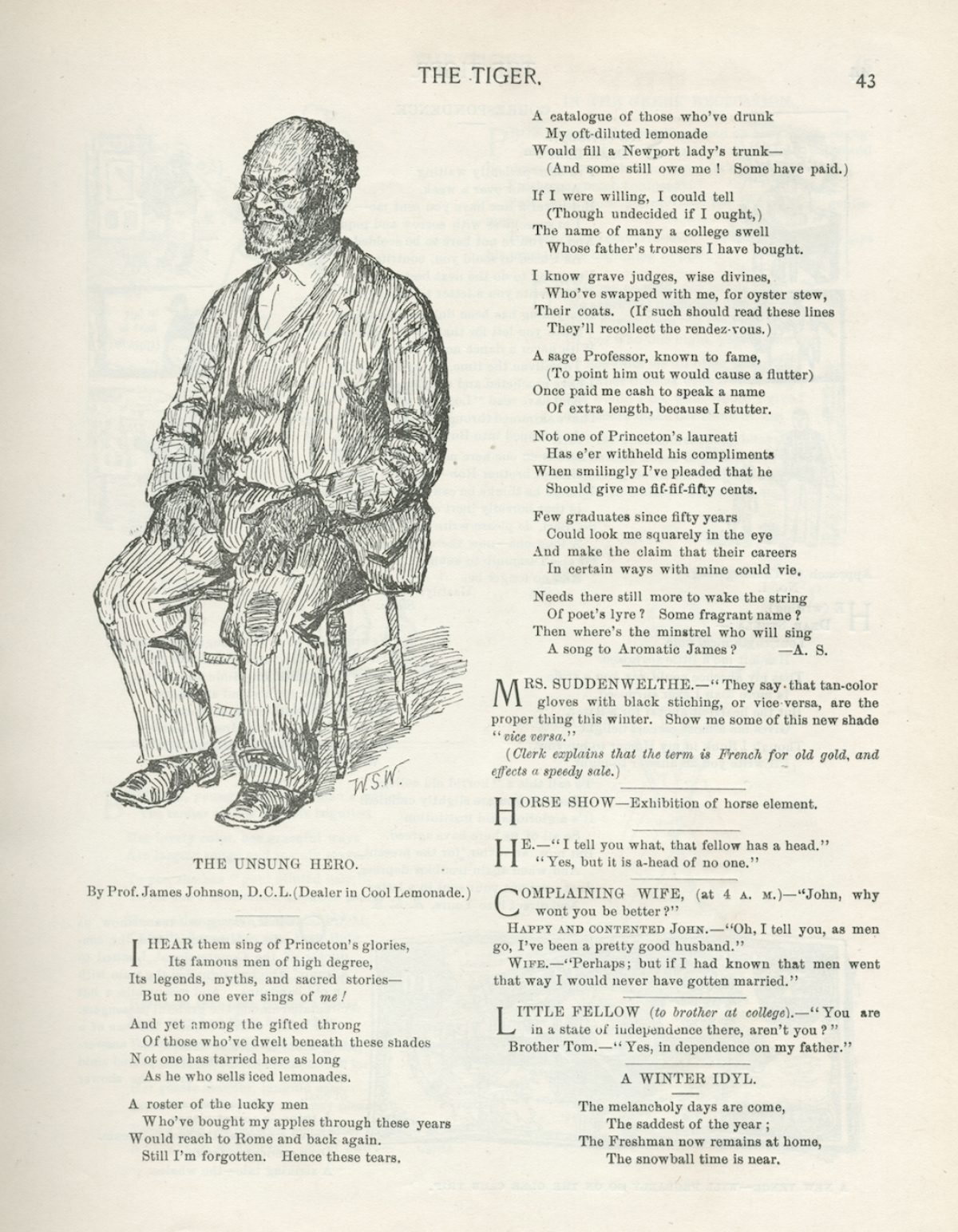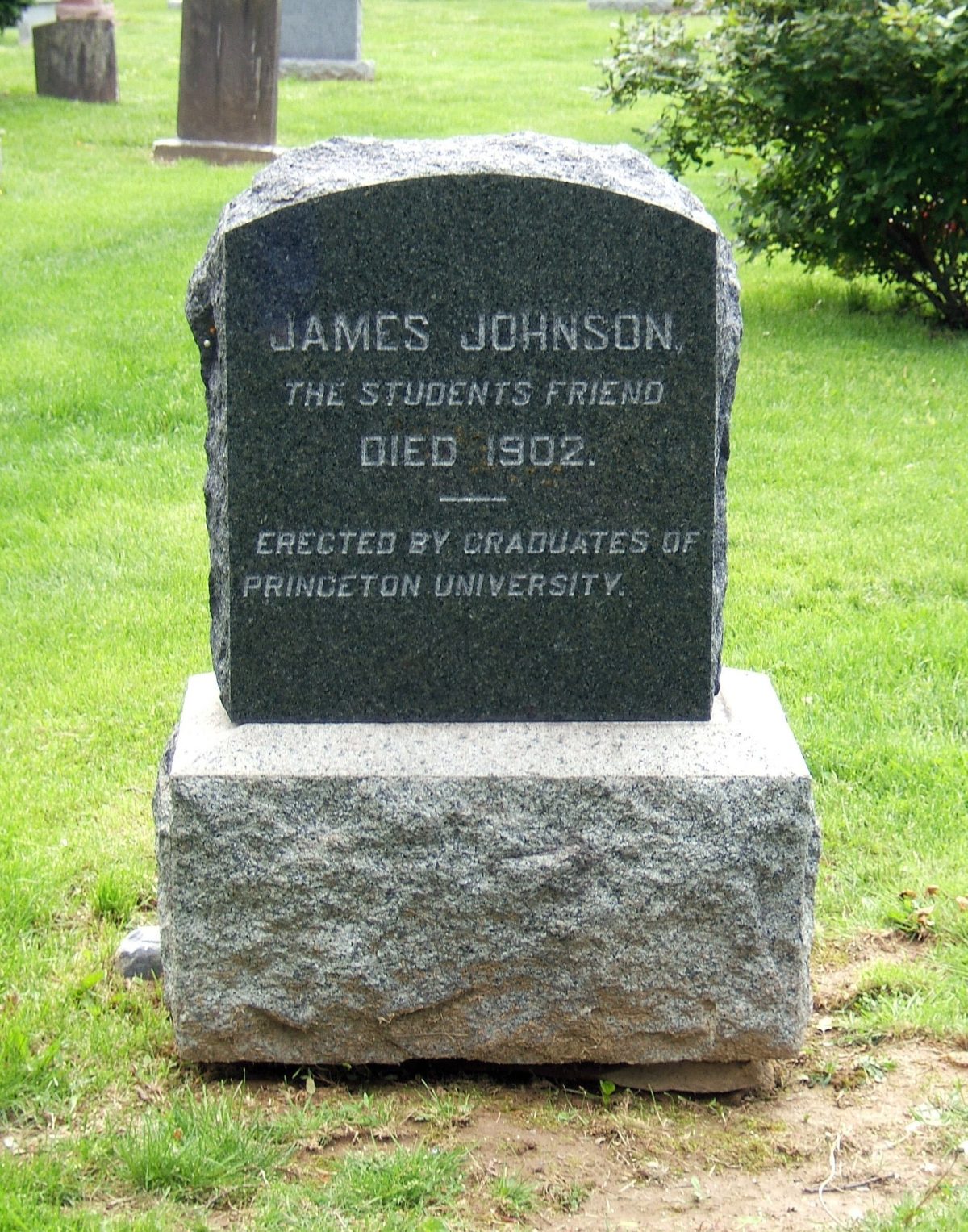[1]
In the 1860 census, Johnson reported that no one over the age of 20 in his house was illiterate. Other evidence of Johnson’s literacy is seen in what appear to be some of Johnson’s signed college pay receipts from the 1840s and 1850s. Office of the Treasurer Records; 1754-2009 (mostly 1939-2006), Box 2 Folder 1; Princeton University Archives, Department of Rare Books and Special Collections, Princeton University Library.
⤴
[2]
The Wallis family was a prominent part of the community in Kent County in the 17th century. The first Maryland Wallis, Samuel, was born about 1674. Samuel Wallis moved to Kent County, where he raised all of his children until he died in 1724. Guy Wallis, The Wallis Family of Kent County (Bristol, VT: [Guy Wallis], 2011). Samuel served twenty-one years as a vestryman for Shrewsbury Parish, as would many of his descendants. Shrewsbury Parish Vestry Records, MSA SC 2513: Shrewsbury Church Collection, microfilm M339-1, Maryland State Archives, Annapolis (hereafter Maryland State Archives). He acquired and farmed several tracts of land in Morgan’s Creek Neck and parts of Queen Anne’s County that were held by members of the Wallis family for over 100 years. He bequeathed a tract of land called “Partnership,” containing 900 acres, to his sons Samuel (the father of Philip Wallis the elder), John, and Hugh. Will of Samuel Wallis, probated 9 May 1724, Maryland Calendar of Wills, 1645–1743, accessed 7 August 2017, www.ancestry.com.
⤴
[3]
Some scholars have suggested that enslaved children who were sold or transferred were often accompanied by at least one parent. See Marie Jenkins Schwartz, Born in Bondage: Growing Up Enslaved in the Antebellum South (Cambridge, MA: Harvard University Press, 2009), 165; Robert William Fogel and Stanley L. Engelman, Time on the Cross: The Economics of American Negro Slavery (New York: W. W. Norton and Company, 1995). However, historian Michael Tadman writes that separating enslaved children from their families was an integral part of the conduct of the U.S. slave trade and that the slave trade was “custom-built to maximize forcible separations.” Michael Tadman, Speculators and Slaves: Masters, Traders and Slaves in the Old South (Madison, WI: University of Wisconsin Press, 1989), 141. Tadman calculates that enslaved children in the Upper South under the age of fourteen had at least a one in three chance of being sold to the Deep South away from parents (45). Local sales in the immediate region of the child’s home, Tadman asserts, “would have increased an enslaved child’s possibility of being separated from parents to one in two” (171). Historian Herbert Gutman also counters Fogel and Engelman’s claims that slave children were only rarely sold, hired out, given as a gift, or otherwise or transferred without parents. Herbert G. Gutman, Slavery and the Numbers Game: A Critique of Time on the Cross (Urbana, IL: University of Illinois Press, 1975), 9-10. Families were frequently separated as a result of the death of owners and the corresponding need to make legally mandated estate divisions among heirs (133–135).
⤴
[4]
Bernard C. Steiner, “Severn Teackle Wallis,” The Sewanee Review 15, no. 1 (1907): 58-74.
⤴
[5]
Andrew Clerk Imbrie to Charlotte Clerk Imbrie, 24 March 1895 and 7 April 1895, Andrew C. Imbrie Papers; 1895-1947, Box 1 Folder 20, Princeton University Archives, Department of Rare Books and Special Collections, Princeton University Library.
⤴
[7]
“An Ex-Slave’s Return,” Baltimore Sun, 16 August 1895, 6.
⤴
[8]
Some scholars have noted that the phrase “underground railroad” did not come into regular use until the 1840s, though escaping fugitives had likely used such organized networks before they came to be seen as such. Eric Foner, Gateway to Freedom: The Hidden History of the Underground Railroad (New York: W. W. Norton & Company, 2015), 6-7.
⤴
[9]
William J. Switala, The Underground Railroad in New York and New Jersey (Mechanicsburg, PA: Stackpole Books, 2006). See also Siebert, The Underground Railroad from Slavery to Freedom and Charles L. Blockson, The Underground Railroad (New York: Prentice-Hall, 1987).
⤴
[10]
Lucy D. Rosenfeld and Marina Harrison, History Walks in New Jersey (New Brunswick, NJ: Rutgers University Press, 2006), 103.
⤴
[11]
Though there were some variations from this norm from colonial times until the nineteenth century, generally, the legal status of Black children followed the legal status of their mothers. Hence, if Phillis gave birth while a free woman, her son would have inherited her free status. Thomas D. Morris, Southern Slavery and the Law, 1619-1860 (Durham, NC: University of North Carolina Press, 2004), 43-49.
⤴
[12]
Entry for James Collins, Free Inhabitants of Princeton Township in the County of Mercer, State of New Jersey, p. 50, 1850 Federal Census, accessed 7 August 2017, www.ancestry.com.
⤴
[13]
Richard D. Smith, Princeton University (Charleston, SC: Arcadia Publishing, 2015), 19.
⤴
[14]
The back campus area was burned down once each session; for instance, in 1846 there was a massive burning of the back campus privies. James Buchanan Henry and Christian Henry Scharff, College As It Is, or, the Collegian’s Manual in 1853, introduction by J. Jefferson Looney (Princeton, NJ: Princeton University Libraries, 1996), 54; Thomas J. Wertenbaker, Princeton, 1746–1896 (Princeton, N.J.: Princeton University Press, 1946), 243. Burning or exploding privies was apparently a common practice in the early history of the nation’s other older colleges and universities. See, e.g., David Alexander Lockmiller, Scholars on Parade: Colleges, Universities, Costumes and Degrees (New York: Macmillan, 1969), 80, for the early nineteenth-century burning of privies at what is now Brown University. See also James Axtell, Wisdom's Workshop: The Rise of the Modern University (Princeton, NJ: Princeton University Press, 2016), 188.
⤴
[15]
Nicholas L. Syrett, The Company He Keeps: A History of White College Fraternities (Chapel Hill, NC: University of North Carolina Press, 2009), 69; Henry and Scharff, College as It Is, 54; Alexander, Princeton—Old and New, 89.
⤴
[16]
John Frelinghuysen Hageman, History of Princeton and Its Institutions, vol. 1 (Philadelphia: J. B. Lippincott and & Co., 1879), 267.
⤴
[17]
Leroy Gresham, “Apropos of Jimmy Johnson,” Princeton Alumni Weekly, 4 October 1902, 22–23.
⤴
[18]
Ibid. See also Richard Henry Spencer, ed., Genealogical and Memorial Encyclopedia of the State of Maryland (Baltimore, MD: Clearfield, 1919), 240–241.
⤴
[19]
Henry and Scharff, College As It Is, 54.
⤴
[20]
Bill of exchange signed by John Maclean Jr. to College Treasurer J. V. Talmage on 15 March 1844, for payment to Abraham J. Durant for meals provided to students John Henry Thomas, Joseph Wickes, James Buchanan Smith, Alfred H. Colquitt, and Henry H. Welles, Office of the Treasurer Records; 1754-2009 (mostly 1939-2006), Box 2 Folder 1, Princeton University Archives, Department of Rare Books and Special Collections, Princeton University Library.
⤴
[21]
George A. Hanson, Old Kent: The Eastern Shore of Maryland (Baltimore, MD: John P. Des Forges, 1876), 98–99.
⤴
[22]
Andrew C. Imbrie, “James Johnson of Princeton: A Biography,” Nassau Literary Magazine 50 (April 1895): 594–604.
⤴
[23]
William Edward Schenck, Biography of the Class of 1838 at the College of New Jersey at Princeton, N.J. (Philadelphia: Jas. B. Rogers, 1889), 150.
⤴
[26]
Lucius Quintius Cincinnatus Elmer, Practical Forms of Proceedings under the Laws of New Jersey (Bridgeton, NJ: James M. Newell, 1839), 396–397.
⤴
[27]
Portland Weekly Advertiser (Portland, Maine), 12 November 1843, 4.
⤴
[28]
Wallis, “The Late Princeton Fugitive Slave Case,” 1.
⤴
[29]
Leroy Gresham, “Apropos of Jimmy Johnson,” Princeton Alumni Weekly, 4 October 1902, 23.
⤴
[30]
Prigg v. Pennsylvania, 16 Peters 539 (1842).
⤴
[31]
Josiah S. Worth was born June 25, 1787, and died June 14, 1854. See The Trenton Banking Company: A History of the First Century of Its Existence (Trenton, NJ: Trenton Banking Company, 1907), 92.
⤴
[32]
Entry for John Bartow Prevost household, New York Ward 4, New York, New York, p. 726, 1800 Federal Census, accessed 7 August 2017, www.ancestry.com.
⤴
[33]
John Bartow Prevost was the first judge of the Superior Court of the Territory of Orleans from 1804-1808. Richard N. Côté, Theodosia Burr Alston: Portrait of a Prodigy (Mount Pleasant, SC: Corinthian Books, 2003), 331. See also Thomas Jefferson to John B. Prevost, 20 July 1804, Tucker-Coleman Collection, Jefferson Papers, Special Collections Research Center, Swem Library, College of William and Mary.
⤴
[34]
Eberhard L. Faber, Building the Land of Dreams: New Orleans and the Transformation of Early America (Princeton, NJ: Princeton University Press, 2015), 135.
⤴
[35]
Joseph Henry to Harriet Henry, 11 April 1833, in The Papers of Joseph Henry, vol. 2, November 1832–December 1835, The Princeton Years, ed. Nathan Reingold (Washington, D.C.: Smithsonian Institution Press, 1975), 57.
⤴
[36]
Hageman, History of Princeton and Its Institutions, vol. 1, 263–264. Hageman lists Prevost among several “prominent families” who came to Princeton between 1830 and 1840 and took up permanent residence.
⤴
[37]
Death record for Phillis Johnson, 17 July 1852, Princeton, New Jersey, New Jersey, Deaths and Burials Index, 1798–1971, accessed 7 August 2017, www.ancestry.com.
In his interview with Imbrie, Johnson said that his wife was buried in town, but he did not indicate which cemetery. Andrew Imbrie, “James Johnson of Princeton,” Nassau Literary Magazine 50, no. 9 (1895): 594, 597.
⤴
[38]
Marriage of James Johnson and Catherine McCrea, 23 December 1852, New Jersey Department of State, Marriage Records, May 1848–May 1878, Princeton, Mercer County, Book T, p. 226, accessed 7 August 2017, www.familysearch.org.
⤴
[39]
Entry for James Johnson, Free Inhabitants in the Princeton Township in the County of Mercer, State of New Jersey, p. l, 1860 Federal Census, accessed 7 August 2017, www.ancestry.com.
⤴
[40]
John Cruser to James C. Johnson, 25 December 1851, Book of Deeds, Mercer County, p. 337.
⤴
[41]
The Nassau Hall fire occurred on March 10, 1855. It was said to have started when a student who, while visiting President Maclean, left an unattended fire that caught something in the room and ignited. The 1855 fire occurred fifty-three years to the day after an 1802 fire at Nassau Hall. The fire of 1855, like the fire of 1802, left only the outside walls of Nassau Hall standing. “The Burning of Nassau Hall,” Journal of Presbyterian History 4, no. 8 (1908): 364.
⤴
[42]
Death record for Cath. Johnson, 22 June 1880, in New Jersey, Deaths, 1670–1988, accessed 7 August 2017, www.familysearch.org.
⤴
[43]
Entry for Annett Warden, Fifth Ward, Baltimore City, State of Maryland, p. 186, 1870 Federal Census, accessed 7 August 2017, www.ancestry.com. Annett Warden is shown here as having been born 1843, residing with several persons surnamed Webb.
⤴
[44]
George F. Bragg, Men of Maryland (Baltimore, MD: Church Advocate Press, 1914), 123; Harrison Webb and Ann Webb, Free Inhabitants of Columbia, County of Lancaster, State of Pennsylvania, p. 16, 1850 Federal Census, accessed 7 August 2017, www.ancestry.com.
⤴
[45]
Marion Mills Miller, “Jimmy Johnson, D.C.L.,” Princeton Alumni Weekly 23 (April 1948): 10.
⤴





